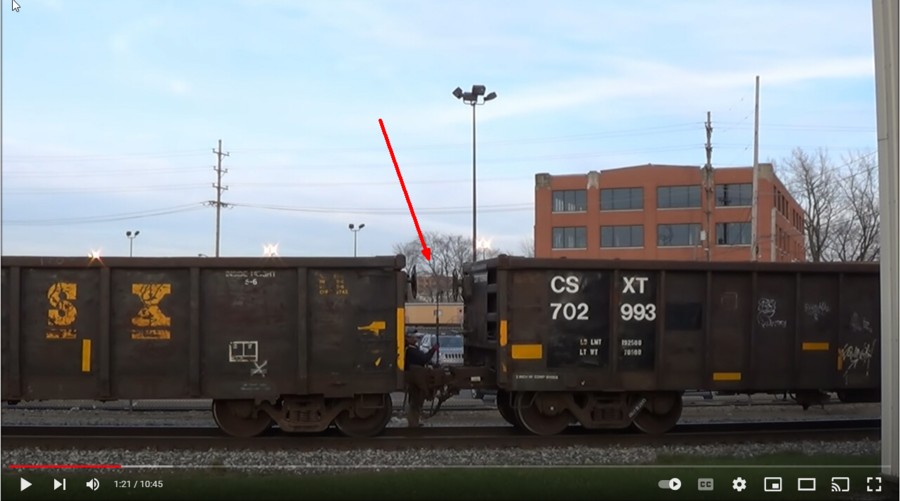
Setting the brakes is an integral part of operations as seen in the YouTube video above (go to the 1:20 mark).
A reader recently contacted me asking for some clarification on operational practices centered on setting brakes while switching. For the answer I reached out to my buddy and ops. guru Tom Klimoski for the answer.
1. I know the hand brakes must be released before a car that is sitting in place with brakes set can be moved. Is the hand brake set every time the car is left in place separate from the train, even if only for a short (minutes) time?
Tom answered as follows:
I checked with my “subject matter expert” (a retired NS engineer) before responding to your questions and confirming what I thought. The easiest answer is that it all depends. 🤔 While that is a “true” answer, it really does not answer the questions you asked so here is the best information I can give you.
The current rules require a hand brake be set and a securement test performed every time a car is set out. A securement test is simply when the crew sets a handbrake on a car they create a little slack in the coupler so the car is “free” and they make sure the handbrake holds and it does roll for at least 1 minute. These rules were not in effect in the past so it really depends on the era you are modeling. Today railroads have rules as to how many handbrakes are required to be set on a given piece of track or siding. I know the GNRR rule book indicates the percentage number of handbrakes required to be set on each siding, some required 100% of the handbrakes be set because they were on a grade. Current NS rules say, 1 car 1 handbrake, 2 cars 2 handbrakes, 3 or more cars “a sufficient number for brakes to hold the cars”. That is why the securement test is so important, it verifies that you have enough handbrakes set to hold the cars.
One example of where you could “get away” without setting a handbrake on a car that you pick up and then respot is where you tie down the handbrakes on cut of car left on the main, go and pull the car from the industry and then couple it to the standing cars on the main. The standing cars will meet the “sufficient number of handbrakes” requirement as long as you perform a securement test.
Now that is what the rules state, what the crews actually do can vary depending on the era and the railroad. Crews will know their territory and what they can get away with. Setting handbrakes takes a lot of time so if they can avoid it they will. That is one of many reasons that crews don’t like railfans video recording what they are doing as it can expose them to discipline if someone sees rules violations in the video.
2. Do the airline hoses need to be connected and the air pumped up every time before a car can be moved, even if only to be set aside and then later but back where it was?
Current NS rules state that every car must be “on air” and the air hoses connected. In the “old days” cars were moved without the air hoses being connected, but crews had to know what they were doing. If the cars don’t have air hoses connected then the crew is only relying on the locomotive brakes to stop the train. Not a big deal if it is only a few cars on a level grade, but it can be disastrous if you have a large cut of loaded cars that get going down a grade and the locomotive brake is not sufficient to stop the train. My NS friend said that years ago he commonly did not have the air hoses connected on shove moves back to the yard from a local switch job. The job was on track other than the main line, level ground, and top speed was 15 MPH so it was okay by the rules. Stricter rules were put into place a few years ago and now he has to have the air hoses connected. In the example above of pulling one car and setting it on the main coupled to other cars with handbrakes applied, the move could be done without air a few years ago, but now it would be a rule violation.
The overriding rule is to “take the safe course of action”, so setting handbrakes and hooking up air hoses will never be wrong. My friend likes to point out that most accident investigations start out with, “I thought”…..
—————————–
Be sure to check out Tom’s recent book “Building the Right-Sized Layout”.